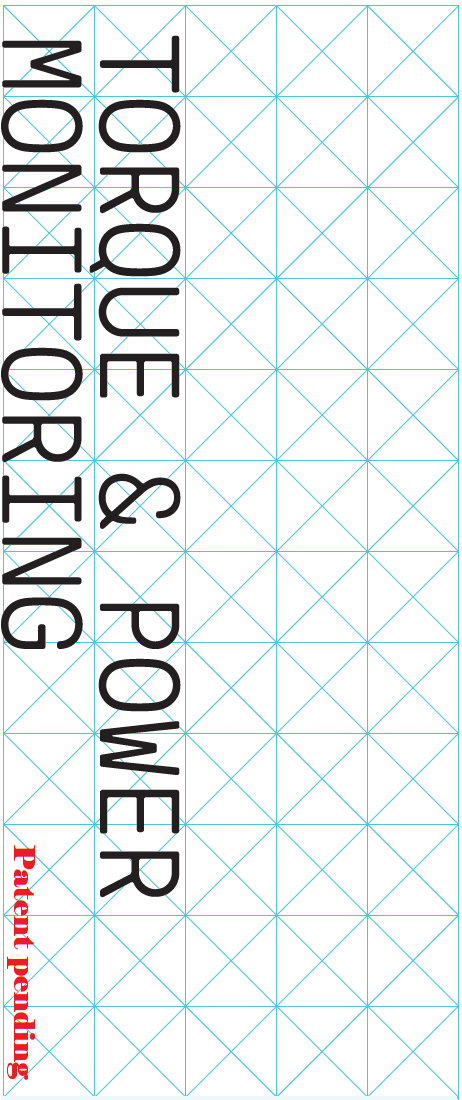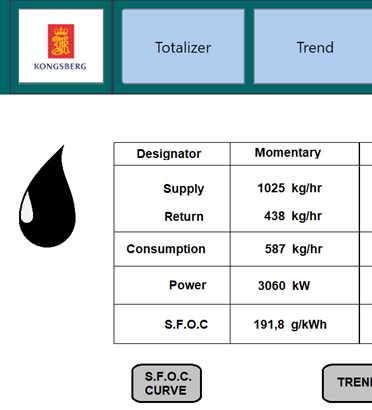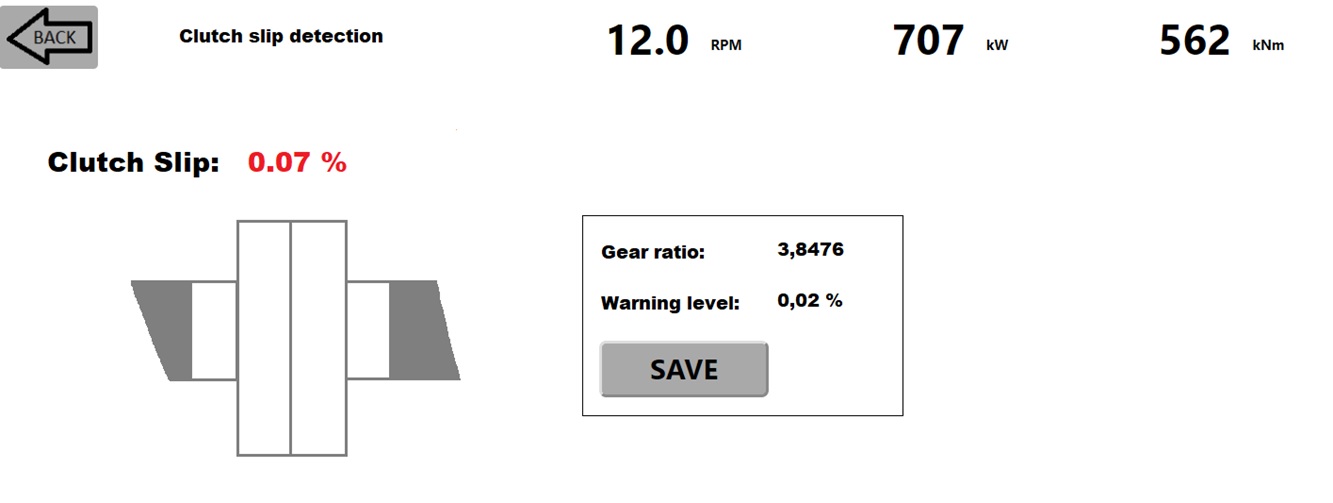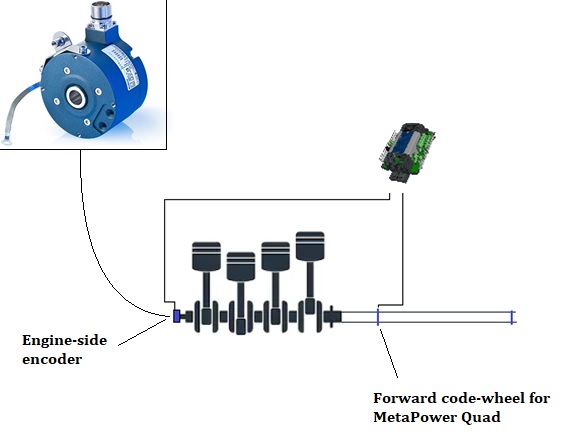The High Speed Input Output (HSIO) module is the main component in the system. High processing capacity and many IO's gives leverage to the torquemeter.
Free sockets can be used to interface flowmeters or other sensors.
For merchant ships the main engine is usually by far the biggest consumer of fuel. If the only requirement is to count and utilize consumption data from the main engine,
it can be beneficial to collect this data together with power data.
By utilizing the calculation and storage capacity in the HSIO, all important data will be logged, and made available on LAN interface, thus removing need for converters or separate logging facilities.
Enabling fuel performance option will normally be the least expensive solution for logging fuel consumption.
NB! Only massflow meters with modbus is possible to interface!
If the clutch starts slipping for some reason, it can get damaged very quick. By comparing the speed at the propeller shaft with the speed on engine side, we will know when that happens
The HSIO will also account for gear-ratio, so this solution can be used for any clutch. Installing and interfacing a separate flywheel sensor is the common practice.
It is also possible to monitor the crank shaft of engine, without intrusion to crank case, and in some cases without any extra instrumentation at all.
By combining the signal from the forward code-wheel with the signal from an encoder in front of the engine, our system is essentialy doing the same as when monitoring a regular shaft.
The encoder in front of engine is providing a similar signal as our sensors, and we can precisely and instantaneously calculate twist-condition of the crank shaft. This can be used for further analysis, or as compensation to TDC calculations in the engine control system.
This is useful for two things:
1. To avoid overstressing the crank shaft. Even makers who carefully computer-model their engines are sometimes surprised of unforeseen vibration caused by interfering oscillation forces of combustion. This is specially important with a direct driven propeller on a marine vessel, because the interaction between hull, propeller and engine can resonate, and set off excessive vibration. Monitoring this is useful to reduce risk of severe damages to the engine.
2. TDC correction factors. The twisting of the crank-shaft can be up to 1-2° or sometimes more. Even this is accounted in the engine control system, the variation of the crank shaft twist during engine cycle can be up to, and above the full span of this.
Thus means you could be applying a 2° TDC correction for a cylinder, when in fact the correction for this particular cylinder at a specific speed might actually be zero or even -1°. Missing the injection timing with 3° could mean increased fuelconsumption, higher emissions, or unessecary wear & tear.
Contact
KM for more information.
Most modern large bore 2-stroke engines already have an encoder on the front side of the crank shaft. Signal from this may be used if it can be shared with HSIO, or an extra hollow encoder should be installed on the outside of this encoder.
Contact
KM for more information about this opportunity.






